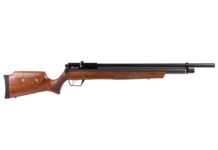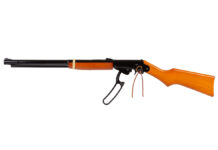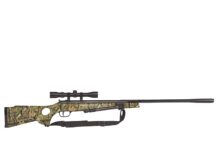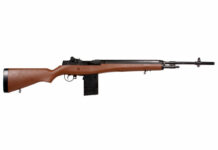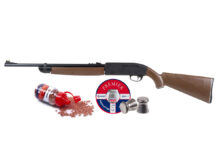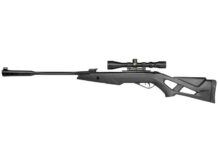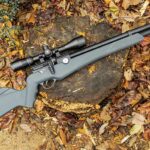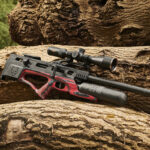Gripping a compound bow is probably one of those things you don’t worry about or notice until it becomes an issue. I’ve had my fair share of grip issues and sometimes still tweak it slightly.
There are three stages you’ll need to go through to fix your grip:
- Good and bad grip
- Proper bow hand grip
- Making your grip you’re own
In this post, I will take you through what a good and lousy grip placement looks like, how to improve it if you’ve got a wrong placement, and finally, how to make your grip comfy. We’ll cover Good and bad grip placement; How to grip the bow properly, Making your grip your own.
Table of Contents
Good And Bad Grip
So to understand what makes a bad grip ‘bad’ and a good grip ‘good,’ I’m going to talk about both so that you might be able to recognize if these are some of the things you do or don’t do. I believe it’ll be easier if I talk about the lousy grip first.
Bad Grip Placement

You’ll know a lousy grip placement when you see a guy holding onto his bow tight. The best comparison I can make to a wrong grip placement is gripping your bow as if you were gripping a baseball bat, knuckles out, fingers wrapped around, lots of tension in your hand. (pic number 1)
On paper, it sounds like it should work, right? Well, this couldn’t be further from the truth. The reason some guys do this is simply an anticipation of the shot. When their trigger goes off, they want to grab the bow subconsciously. What it’ll do is create torq in your shot. From the moment the trigger goes, your brain tells you to grip the bow.
This happens in split seconds. So the arrow is still in the bow. Your bow hand is the last thing to touch the arrow before it leaves the bow. So if you go from not gripping the bow at all to gripping it really tight, it’s going to torq the bow and change the flight of the arrow.
Good Hand Placement

So the opposite, good grip placement can be done in a multitude of ways, but the one common denominator is that the bow isn’t being gripped super tight. The bow is being held by the thumb and fingers pressing on either side of the bow.
What this does is it doesn’t create any form of tension in hand, and you are keeping the bow steady with the thumb and fingers (picture 2). Now, you can position your fingers in a load of different ways, but we will get into that later in the article.
Proper Bow Hand Grip
So here I’m going to walk you through how to get a good consistent handgrip placement. I’ll be explaining as if you are a right-handed archer (swap hands for left-handed archers). With your left hand, make an L shape with your fingers and thumb 90 degrees, then turn your hand about 30 degrees to the left.
Get your bow and slot your hand in (picture 3). Try to get some contact with the palm of your hand with your bow grip. Then what your going to do is your going to curl in all your fingers and run them at a 45 degree down from the shelf of your riser, then push your thumb along the inside of your riser.
You will achieve the best handgrip when you try to squeeze your thumb and fingers together without them actually touching. This will put pressure on both sides of the bow, putting a little torque in the bow.
Let’s say that previously you were gripping your bow last second in anticipation. You can follow the steps above to try and get used to the new idea. You can place your fingers straight out instead of curled. However, ultimately you want to be able to have your fingers curled for a better and more consistent pressure in hand.
Making Your Grip Your Own
Once you’ve gone and practiced the steps in my last heading, I almost guarantee you you’ll have said something along the lines of ‘I wonder could I move my…’, and the answer will usually be yes! A person’s grip is as individual as their thumbprint. You can move the angle of your hand down or out, move your first finger and your second finger around the front of the bow.
Like I said before, there is a multitude of things you can do. Once you’re keeping that squeeze instead of gripping, you can play around with it. All I’ll say is once you find something that you find a comfortable stick with it.
There’s no point in changing the way you hold your bow 24/7. At first, it might feel like a conscious effort to get your hand in the same spot. Over time, practice will make it subconscious action.
To give you an example of a grip, I’ll explain mine. Place the first two fingers around the front of the bow and the last two pushed up against the edge of the grip, thumb pushing onto the grip on the other side. I also use some sticky grip tape which I highly recommend.
Are shot trainers good? Shot trainers are suitable for practicing the execution of your shot, but sometimes, since it’s not the same pressure as a bow, the timing of your shot can be different.
You may find the following posts useful:
Should you wrap your bow grip?
Field archery shooting tips
How to hold bow arm steady?
How to use back tension with a trigger release?
What aperture for my peep?
Archery sight marks










